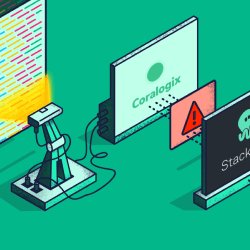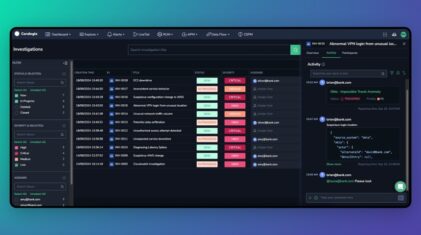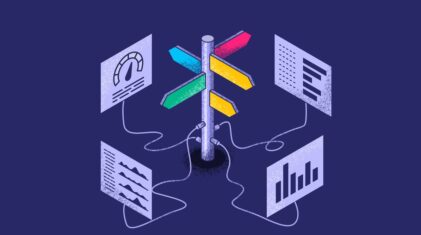The term ‘cloud native’ has become a much-used buzz phrase in the software industry over the last decade. But what does cloud-native mean? The Cloud Native Computing Foundation’s official definition is:
“Cloud-native technologies empower organizations to build and run scalable applications in modern, dynamic environments such as public, private, and hybrid clouds…These techniques enable loosely coupled systems that are resilient, manageable, and observable.”
From this definition, we can differentiate between cloud-native systems and monoliths which are a single service run on a continuously available server. Like Amazon’s AWS or Google Azure, large cloud providers can run serverless and cloud-native systems. Serverless systems are a subset of cloud-native systems where the hardware settings are completely abstracted from developers. Private servers maintained by private companies can also run cloud-native services.
The critical point to consider is that cloud-native solutions have unique observability problems. Developing, troubleshooting, and maintaining monolithic services is quite different from troubleshooting cloud-native services. This article will introduce some of the unique issues presented in cloud-native computing, and tools that allow users to gain cloud-native observability.
Challenges and opportunities of the cloud
Cloud-native infrastructure provides many benefits over traditional monolithic architecture. These distributed computing solutions provide scalable, high-performing systems that can be upgraded rapidly without system downtime. Monoliths were sufficient for demand in the earlier computer-era days but could not scale well. The tradeoff for cloud native’s agility is an obfuscated troubleshooting process.
With new techniques in software infrastructure also came new techniques in cloud-native observability. Tools to centralize and track data as it flows through a system have become paramount to troubleshooting and understanding where issues might arise.
User expectations
Cloud-native systems by design make scaling easier by simply adding more infrastructure for existing software to run on. Scaling may occur by adding more physical servers or increasing cloud computing capacity with your chosen provider. Businesses need to be able to detect when scaling is necessary to accommodate all potential customers.
Along with scaling systems, adding additional features to your offering is crucial to growing your business. Cloud-native solutions allow development teams to produce features that can plug onto existing services quickly. Even with significant testing, features can have unseen flaws until they are deployed and running in the system for some time.
It is crucial to have cloud observability tools to monitor the system and alert the appropriate team when issues arise. Without such a service, users will be the first to discover issues that will hurt the business.
Distributed Systems
Cloud-native services run as distributed systems with many different software pieces interacting with each other. Systems may have many containers, compute functions, databases, and queues interacting in different ways to make up a unified feature. As well, different features may use the same infrastructure.
When an issue arises in a system or a connection, isolating the issue can be difficult. Logging remains as crucial as it was with monolithic solutions. However, logging alone is not sufficient to have complete cloud-native observability. Systems also need to understand how microservices are working together. Traces can be used to track requests through a system. Metrics can also be used to understand how many requests or events are occurring so teams can quickly detect and isolate issues.
New tools are being introduced into the software industry to help teams rapidly fix production issues. Since distributed systems are ideal for rapid changes, fixes may be rapid as well. The more significant problem is that detecting issues becomes much more complex, primarily when developers have not implemented observability tools. Using a combination of logs, metrics, and traces and having all records stored in a centralized tool like Coralogix’s log analytics platform can help teams quickly jump over the troubleshooting hurdle to isolate the issues.
Ephemeral infrastructure
Cloud-native observability tools are available to deal with the ephemeral nature of systems. Cloud-native deployments are run on temporary containers when using cloud native. The containers will spin up and shut down automatically as system requirements change. If an issue occurs, the container will likely be gone by the time troubleshooting needs to occur.
If systems use a serverless framework, teams are even more abstracted away from the hardware issues that may cause failures. Services like AWS and Azure can take complete control over the handling of servers. This abstraction allows companies to focus on a software core competency rather than managing servers both physically and through capacity and security settings. Without knowing how services run, systems have a limited ability to know what failed. Metrics and traces become critical tools to cloud-native observability in these cases.
Elastic scalability
Cloud-native systems typically use a setup that will scale services as user requirements ebb and flow. With higher usage, storage and computing require more capacity. This higher usage may not be consistent over time. When usage decreases, capacity should decrease in turn. Scaling capacity in this way allows businesses to be very cost-efficient, paying only for what they use. It can also allow them to allocate private servers to what is needed at that time, scaling back capacity for computing that is not time-critical.
Cloud-native observability must include tracking the system’s elastic scaling. Metrics can be helpful to understand how many users or events are accessing a given service at any given time. Developers can use this information to fine-tune capacity settings to increase efficiency further. Metrics can also help to understand if part of the system has failed due to a capacity or scaling issue.
Monitoring usage
Cloud-native systems follow a new manner of designing and implementing systems. Since the construction of the systems is new, professionals need also to consider new methods of implementing security practices. Monitoring is key to securing your cloud-native solution.
With monolithic deployments, security practices partially focussed on securing endpoints and the perimeter of the service. With cloud-native, services are more susceptible to attacks than previously. Shifting to securing data centers and services rather than only endpoints is critical. Detecting an attack also requires tools as dynamic as your service to observe every part of the infrastructure.
Security and monitoring tools should scale without compromising performance. These tools should also be able to contain nefarious behavior before it can spread to an entire system. Cloud-native observability tools are designed to help companies track where they may be vulnerable and, in some cases, even to detect an attack themselves.
Conclusion
Cloud-native solutions allow companies to create new features and fix issues quickly. Observability tools are key in cloud-native solutions since issues can be more obfuscated than in traditional software designs. Developers should implement observability tools into their systems from the first inception. Initial integration ensures tools are compatible with cloud providers and still leaves the ability to augment cloud-native observability tools in the future.
Microservices built on a cloud-native architecture can have multiple teams working on different features. Teams should implement observability tools to notify the appropriate person or team when an issue is detected. Tools that allow all team members to understand the health of the system are ideal.








